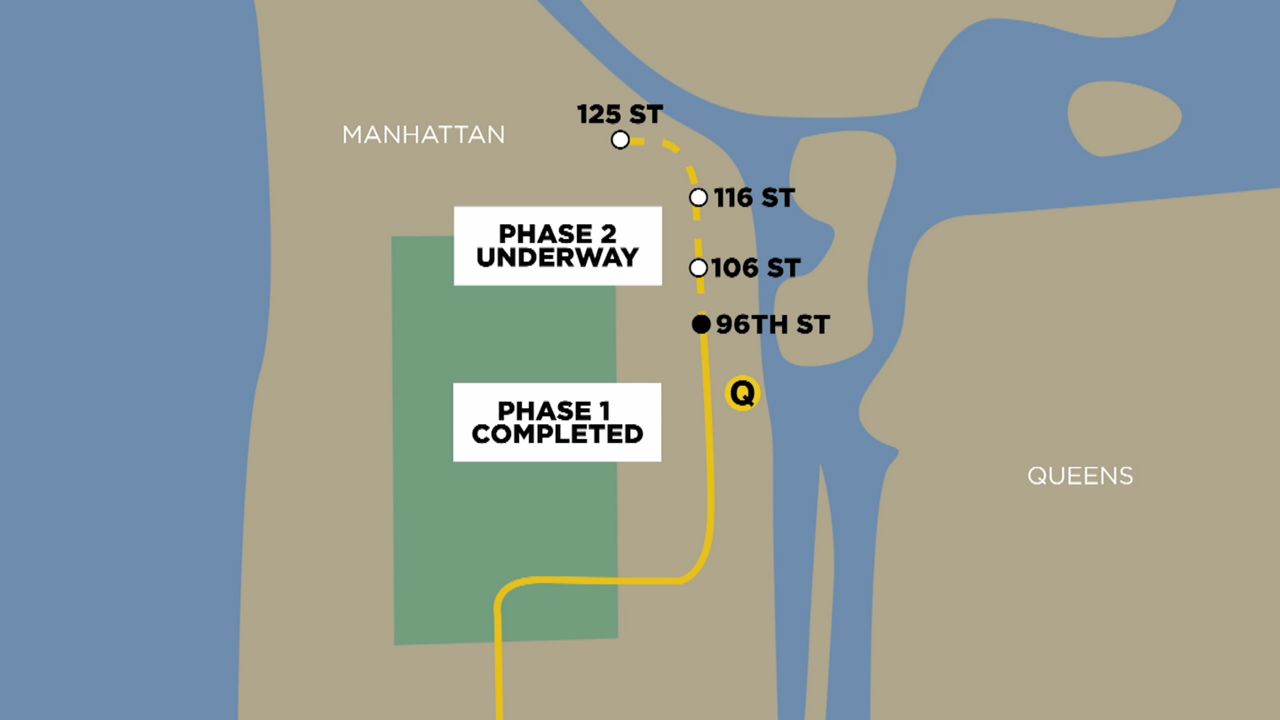Alberto Rivera has a long bus ride home downtown to 14th Street from 116th Street in East Harlem, where he works as a school custodian.
He’d rather be taking the subway.
“Yes, it’s quicker. Much quicker,” Rivera said. “It’s a better thing for everybody, it’s quicker for everybody.”
It may take until the end of the decade, but commuters in Harlem could be riding the Q train as part of the Second Avenue subway extension — if it gets the support and funding from the federal government.
What You Need To Know
-
The Biden administration recommended $400 million for the MTA to extend the Second Avenue subway to East Harlem
-
MTA officials and New York congressional reps see the funding proposal as a sign the Biden administration supports the Second Avenue subway
-
The Second Avenue subway extension to East Harlem is slated to cost $6.9 billion — the MTA wants the federal government to pay for half
President Joe Biden’s proposed budget released Monday signaled to MTA officials and New York congressional reps that his administration is ready to get behind the project, which would include three new stations to bring the Q train to 125th Street.
A $400 million U.S. Federal Transit Administration grant for the new stops is included in the budget proposal.
“We’ll be able to move the Second Avenue subway from the engineering phase that it’s currently in, to phase three, which is construction and development,” Felicia Park-Rogers, the regional infrastructure projects director for the Tri-State Transportation Campaign.
Park-Rogers said it’s a promising sign that the project will move forward under Biden and his transportation secretary, Pete Buttigieg.
“I think if things keep going forward at this rate, we might see bulldozers in the ground in the fall. we’re not quite there yet,” Park-Rogers said.
The Second Avenue subway had stalled for decades. Commuters waiting for the bus at 116th Street and Second Avenue are standing above tunnels for the subway line built in the 1970s.
The first part of the subway opened in 2017 with three new stations up to 96th Street. This phase will bring the subway to 125th Street with three more stations at 106th, 116th and 125th streets.

“For me it’s better if they bring the subway here, much better,” said Yenni Meca, an East Harlem resident waiting for the M15 bus.
For now, Meca must walk almost a quarter of a mile from her home on First Avenue to the Lexington Avenue line or take a bus to catch the Second avenue Subway at 96th Street.
With the extended Second Avenue subway, she said, “I’m not going to walk so much because to walk from here, First Avenue to Lexington is a lot, so it actually could save time.”
This next phase of the second avenue subway is slated to cost $6.9 billion and the MTA wants the federal government to pay about half.
Both sides must reach a full-funding deal before the MTA can start taking federal grant money for the Second Avenue subway.
Governor Kathy Hochul, Senator Chuck Schumer, and Democratic members of New York’s congressional delegation praised Biden’s commitment to federal funds for the expansion Monday.
“Reliable transportation will support the livelihood of over 100,000 East Harlem residents who currently experience barriers to job opportunities, educational advancement, and access to hospitals and medical care,” Schumer and Rep. Adriano Espaillat said in a joint statement. “When complete, the Second Avenue Subway extension will reshape the fabric of our neighborhoods and all of New York City — connecting Harlem to the rest of the world.”



